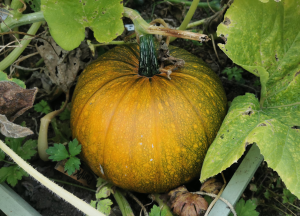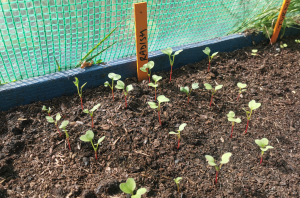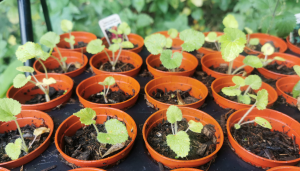
Introduction:
The edible garden in September is starting to wind down and you should be mostly harvesting what’s left. It’s also a good time to start clearing beds, covering with cardboard, and leaving them for the next year. If you are thinking of growing onions and garlic, this month is a good time to prepare the ground for these crops if you plant them in October.
Read the previous articles here:
January / February / March / April / May / June /July / August
If you are new to growing your own food and want to have a go, why not start this year? Email us for a free PDF guide to help you! Laura will also help via social media or email – laura.beardsmore@tcv.org.uk
Seeds to Sow in September:
If you have flowers around your food crops, September is a good time to start saving seed, or to take the seed pods off and scatter them around. This gives the flowers a little bit of a headstart, ready for them to grow next year. Nasturtium, calendula, cornflower, tagetes, poppy, foxglove, sea holly, and a range of wildflowers are all really good at self seeding, so you could leave them to their own, or give them a helping hand.
Have a read of this blog by Allens Cross Community Garden.
For food, crops this month:
- Cauliflower – all the year round, starting now ready for planting out in February or March. Start these indoors, or use a plastic box as a greenhouse.
- Salad crops, perfect for growing indoors on windowsills for an autumn harvest. Try mizuna, rocket, lollo rosso, winter hardy spring onion, sorrel, mustard red frills, spinach, and corn salad.
- Both indoors and outdoors, direct sow some winter peas such as Douce Provence or Meteor. This will give them a headstart to grow over winter, ready to crop in February. They will need some frost protection over the worst part of winter.
You could also sow salad crops outdoors but as the weather cools, they will grow more slowly.
Successional Sowing:
If you have indoor space such as a polytunnel, greenhouse, or deep pots on a windowsill, you could do a very late sowing of carrots. These should be ready to pull in January or February.
Planting Out in September:
If you have leek seedlings that are about 15cm tall, these could pricked out and planted into their growing bed, ready to grow over winter.
I have some winter peas that I started in August, so these will also be planted out in September.
Harvesting Food in September:
Lots of crops should be ready this month, including:
- Sweetcorn
- Pumpkin and squashes
- Aubergine
- Beans
- Salad crops
- Cabbage
- Chard
- Parsnip
- Carrot
- Turnip
- Late tomatoes
- Pepper
- Pak choi
Pumpkins will need curing so that they store over winter. To do this, chop the vine as long as possible, then put the fruit somewhere cool and dry with good ventilation. The skin will harden. Make sure to check it frequently, any blemishes or slugs will stop it storing as well.

Leave the fruits on the plant to fully colour, and then cut them to store. They need to cure for four weeks or so before being carved!
Seeds Sown in August:
Hollyhocks and foxgloves should be growing well. If they have two sets of true leaves, they should be pricked out into bigger pots which will encourage them to grow stronger roots and will be more frost tolerant over winter.
Any salad crops with leaves 8-10cm long are ready to be picked, washed and eaten.
If you started herbs and they have healthy growth with a few strong leaves, these could also be pricked out and potted up.
Remember to tag us and share pictures with us on social media – find us on:
And if you want help and advice, why not join our Grow Well, Eat Well group on Facebook?

